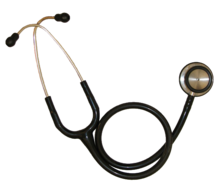ANDROPAUSE: HOW TO MANAGE MALE MENOPAUSE
The issue of male reproductive dysfunction cannot be overstressed because it is just like in the female partner a dysfunction due to aging.
Menopause continues to be a problem in the adult male. If you are suffering from decreased sex drive or inability to sustain an erection, then you may be suffering from male menopause otherwise called Andropause.
You thought menopause was something women went through when they reached the age of 50, didn’t you? Well, men go through it too. But Andropause, unlike the female menopause, which is related to female reproductive function, affects male sexual function instead.
Other symptoms of Andropause are erectile dysfunction, decreased libido, mood disturbance including depression, irritability, feeling tired, loss of muscle size and strength, osteoporosis, increased body fat, difficulty with concentration, memory loss, and trouble sleeping. The good news is that the aging process of Andropause can be slowed down by the way we eat, what we eat, and our other lifestyle.
Food that causes allergies stresses the stomach or the adrenals are essential in the development of Andropause. The condition may also be accelerated by stress on the gallbladder the ‘unsung body hero.’
The word Andropause is formed by combining two Greek words- andro (male) and pause (stop). Men suffering from this may well feel that their manliness has indeed stopped or declined.
Although medical practitioners have studied Andropause since the 1940s, it is still a controversy, and many men still deny its existence. However, it is becoming more widely accepted in the scientific world as something that does indeed happen to men as they age. It is described by Jed Diamond, a California psychotherapist and author of Male Menopause as “puberty in reverse”. Since like puberty, Andropause wreaks “hormonal, psychological, interpersonal, social, sexual and spiritual changes in aging men just as puberty does for teenage youths.”
According to researchers in the Department of Urology, Queens University, Kingston General Hospital, Ontario, Canada, Andropause happens to 1 in 200 Canadian men. A study conducted in 2003 by Dr. A. Festus and others from the Obafemi Awolowo University, Ile-Ife, Osun State found that 44 per cent of men aged 30 to 70 have erectile dysfunction, and out of this, eight per cent was severe and 36 per cent moderate.
The researchers found that the incidence of erectile dysfunction increased as men got older from 38.5 per cent for men aged 31-40 years to 64 per cent for the older age group of 61-79 years. Of social significance is that the researchers found that most men deny the existence of Andropause. 39 per cent regard it as a myth while another 24 per cent attribute it to various non-scientific causes which they usually blame on their wives. They, therefore, use this excuse to look for younger partners, only to discover that the problem has not gone away. They may stop looking for younger partners, but the denial of its existence and not realizing that Andropause has a medical foundation that prevents men from seeking appropriate medical help.
Andropause is due to changing hormone levels in men, which progressively decline with age. Andropause is characterized by loss of testosterone, the hormone that makes men act like men. Most men’s testosterone levels drop as they age. However, some men are affected more than others are.
The rate of decline varies from individual to individual. The loss of testosterone, which can happen to men as young as 35, is gradual with testosterone levels dropping by one per cent to 1.55 annually, starting at about age 30. Testosterone levels drop by about 10 per cent every ten years. At the same time, another hormone in the body called Sex Binding Hormone Globulin or SBHG traps much of the testosterone that is still circulating the system and makes it unavailable to the body’s tissues to make them function properly.
The testosterone that is remaining to assist the tissues to function as they should is called “bioavailable testosterone levels.” Every man experiences a decline of bioavailable testosterone, but some men’s levels dip lower than others. It is estimated that 30 per cent of men in their 50s will have testosterone levels low enough to cause andropause symptoms.
Testosterone is one of the hormones forming the androgen panel or make hormones. According to the World Health Organisation, total androgen levels, not just testosterone, also affect male Andropause as these hormones decline as men age. The WHO study found that androgen levels of men aged 70 were only 10 per cent of that of men of 25 years. For this reason, some have described Andropause as ADAM (Androgen Deficiency of the Aging Male).
Unlike women, men do not have a clear-cut signpost, such as the stopping of menstruation to tell them they are in Andropause. Instead, it comes as a gradual and distressful decline in their sexuality, overall energy with increasing moodiness.
5 TIPS ON HOW TO PREVENT PROBLEMS RELATED TO ANDROPAUSE
All men experience a gradual decline in their testosterone levels after the age of 30. This is quite normal. But for some men, this phenomenon causes symptoms that can disrupt their daily lives. Erectile function disorder, loss of energy, depression, and increased fat tissues are only a few examples. However, it is possible to prevent or improve these symptoms by minimizing the decline in testosterone levels. How? By following these tips.
MODERATE YOUR ALCOHOL CONSUMPTION
Alcohol lowers testosterone levels in the blood, which can have negative, sometimes long-term effects, on your sex drive and erectile function. Alcohol consumption for men should not exceed 15 drinks a week distributed over 7 days, i.e. 3 drinks a day.
AVOID SOURCES OF STRESS
Stress releases cortisol, a hormone that reduces the production of testosterone. Learn to relax through breathing exercises and meditation when you’re stressed.
CHECK YOUR DIET
Make sure you’re getting a balanced diet. The proportion of fats, sugars (energy source), and proteins you eat affects your testosterone levels. Be sure you’re getting enough nutrients such as zinc (red meats, mushrooms, spinaches, broccolis, etc.), omega-3 (nuts, canola oil, salmon, sardines, chia seeds, etc.), vitamin D, and calcium (dairy products, soya drinks, etc.). Avoid foods that are too sweet or salty, caffeine, and bad fats that can cause the body to slow down, impeding hormone production.
STAY ACTIVE
Doing thirty minutes or more of intense physical activity will encourage your body to produce testosterone. So it is recommended that you stay active and regularly practice a sport such as weight training or swimming (or any other sport that uses most of the muscles in your body) to promote testosterone production. Doing physical exercise is also the best way to stay healthy.
GET ENOUGH SLEEP
Testosterone is produced mainly during REM sleep, so it’s important to get a full night’s sleep, i.e. eight straight hours. If you have difficulty falling asleep.
TREATMENT OF ANDROPAUSE
Talk to your pharmacist for advice.
When the symptoms of andropause become too severe, many men turn to testosterone supplements.
Although there is some debate about the effectiveness of testosterone supplements, they do appear to improve mood, energy levels, muscular strength, and bone health.
Testosterone supplements come in a number of different forms: pills, patches, gels, and injections. Testosterone treatments are generally safe for most men, but they can involve certain risks. Talk to your pharmacist!

